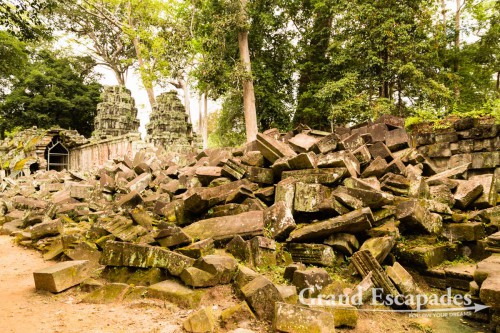It has been about 100 years that serious conservation work began in the area, so already before the Vietnam War, tourists came to admire the grandeur of Angkor. Then many years of war made visits and restoration work impossible, but in the mid 90s tourists slowly started to return.
Initially, mainly N.G.O workers began arriving in Phnom Penh in those days and eventually package tourists flew in from there. But then, only Angkor Wat was cleared of land mines. Apart from the landmines making it impossible for tourists to venture out and see the many other temples, the area was still a battle ground between supporters of Pol Pot and government troops. Only when “Brother Number 1” died in 1998 did the fighting finally stop. Although Angkor was never desecrated by the Khmer Rouge, bullet holes give evidence of shoot outs between the two groups.
A tour guide told us that in 2001, there were only a handful of hotels and guesthouses in the city and on Siem Reap’s “pub street”, there were four restaurants catering foreigners. ATMs were unknown in Cambodia then and individual backpacking was difficult, because roads were in horrid condition.
Seven years later, “Pub Street” is the epicenter of the city’s diverse restaurant and bar scene, a street lined with western style bars and eateries, branching out into the neighboring alleys and streets. All international hotel chains are represented here, as innumerous others. Although businesses must be Khmer owned, there are many ways to surpass the law. Many investors are Chinese, South Korean, Thai and without a few exceptions almost all tourist restaurants are run by foreigners.
Countless spas offer any kind of massage and various markets cater to tourists hunting for souvenirs. Right now, a brand new shopping mall is being built, one of the innumerous construction sites in the city. And yes, ATMs arrived to make it possible to spend your money at all these venues!


No comments yet.